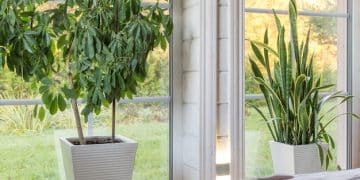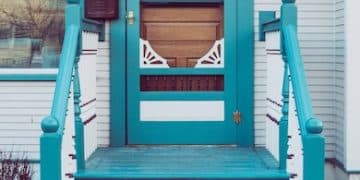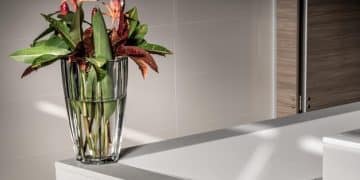Add Value to Your Home: New Flooring for Increased Property Appeal
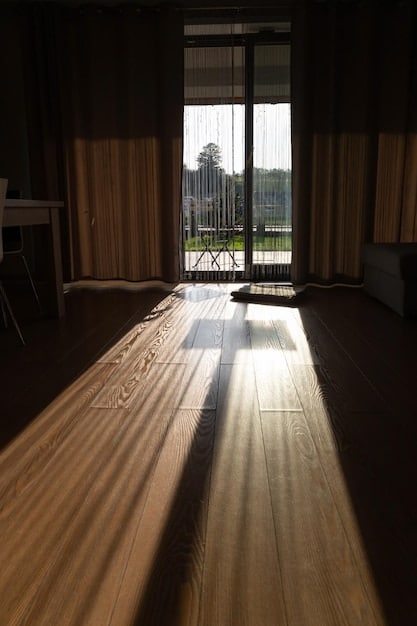
Adding value to your home can be achieved through strategic upgrades, and installing new flooring is a significant investment that enhances aesthetics, functionality, and overall property appeal, making it a worthwhile consideration for homeowners in the US.
Looking to add value to your home? One of the most effective ways to increase your property’s appeal and market value is through new flooring. Whether you’re planning to sell or simply want to enjoy an upgraded living space, the right flooring can make all the difference.
Choosing the Right Flooring to Add Value
Selecting the appropriate type of flooring is crucial when aiming to boost your home’s value. Different materials offer varying levels of durability, aesthetic appeal, and cost-effectiveness. Understanding these factors can help you make an informed decision that aligns with your budget and desired outcome.
Hardwood Flooring: Classic and Timeless
Hardwood flooring is a perennial favorite among homeowners. Its natural beauty and longevity make it a valuable addition to any home. Options range from traditional oak to more exotic wood species, allowing you to customize the look to suit your style.
Engineered Wood: A Practical Alternative
Engineered wood offers a similar aesthetic to hardwood but with enhanced stability and resistance to moisture. This makes it a suitable choice for areas prone to humidity or temperature fluctuations.
- Consider wear layer: A thicker wear layer enhances durability and longevity.
- Match to your existing style: Choose a wood species and finish that complements your home’s existing architecture.
- Factor in maintenance: Understand the upkeep requirements to keep it looking its best.
Investing in high-quality hardwood or engineered wood flooring will not only improve the look and feel of your home but also significantly increase its market value.
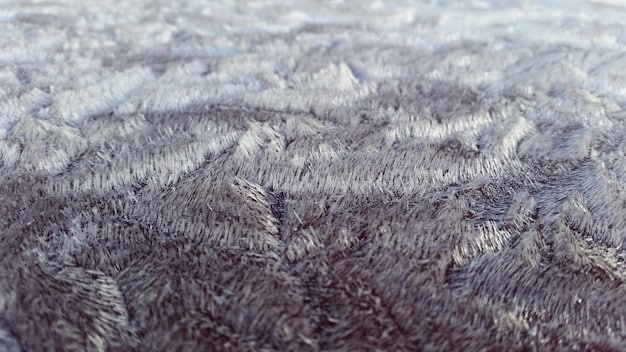
Exploring Carpet Options for Comfort and Value
While hardwood is often seen as the premium choice, carpets can also add value to specific areas of your home, particularly bedrooms and living rooms. The key is to select high-quality, durable carpets that offer both comfort and aesthetic appeal.
Types of Carpet Fibers
Different carpet fibers offer unique benefits. Nylon is known for its durability and stain resistance, while wool provides luxurious softness and natural resilience. Polyester is a budget-friendly option that is also stain-resistant.
Carpet Styles and Textures
The style and texture of your carpet can greatly impact the overall look and feel of the room. Plush carpets offer a luxurious feel underfoot, while Berber carpets provide a more casual and durable option.
- Consider foot traffic: Choose a higher pile for low-traffic areas and a lower pile for high-traffic zones.
- Match to your décor: Select a color and texture that complements your existing furniture and style.
- Factor in maintenance: Regular vacuuming and professional cleaning are essential for maintaining carpet’s appearance and lifespan.
By carefully selecting the right carpet for your needs, you can enhance the comfort and style of your home while potentially increasing its value.
Laminate and Vinyl: Budget-Friendly Flooring Solutions
For homeowners on a budget, laminate and vinyl flooring offer cost-effective alternatives to hardwood and tile. These materials have come a long way in terms of appearance and durability, making them viable options for many areas of the home.
Laminate Flooring: Realistic Wood and Tile Looks
Laminate flooring is designed to mimic the look of natural wood or tile at a fraction of the cost. It is also highly durable and easy to maintain, making it a practical choice for busy households.
Vinyl Flooring: Versatile and Waterproof
Vinyl flooring is a versatile option that is available in a wide range of styles and colors. It is also waterproof, making it ideal for bathrooms, kitchens, and other areas prone to moisture.
- Choose a quality underlayment: This can improve the feel and sound insulation of laminate and vinyl flooring.
- Consider the wear layer: A thicker wear layer will provide greater durability and resistance to scratches and dents.
- Look for realistic textures: Embossed textures can enhance the look and feel of laminate and vinyl flooring, making them more closely resemble natural materials.
While laminate and vinyl flooring may not add as much value as hardwood or tile, they can still improve the overall look and functionality of your home at an affordable price.
Tile Flooring: Durability and Elegance for Key Areas
Tile flooring is a popular choice for kitchens, bathrooms, and entryways due to its durability, water resistance, and aesthetic appeal. Available in ceramic, porcelain, and natural stone, tile offers a wide range of design possibilities.
Ceramic Tile: A Classic Option
Ceramic tile is a versatile and affordable option that is available in many colors, sizes, and styles. It is also relatively easy to install and maintain.
Porcelain Tile: Superior Durability and Water Resistance
Porcelain tile is denser and more durable than ceramic tile, making it a better choice for high-traffic areas. It is also highly water-resistant, making it suitable for bathrooms and kitchens.
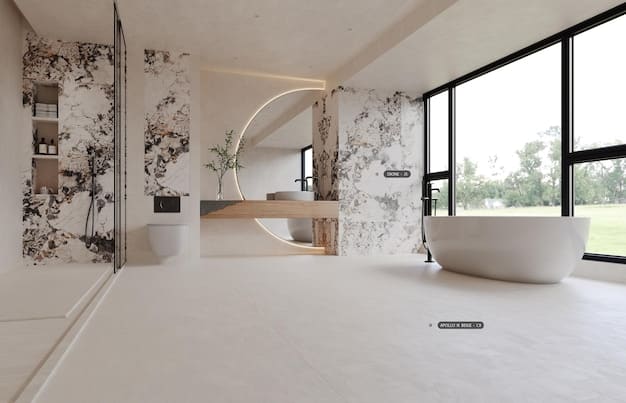
Investing in high-quality tile flooring can significantly enhance the look and value of your home, especially in key areas like kitchens and bathrooms.
Professional Installation vs. DIY: Weighing the Pros and Cons
Deciding whether to hire a professional installer or tackle the flooring project yourself is an important consideration. While DIY installation can save money, professional installation ensures quality and can prevent costly mistakes.
Benefits of Professional Installation
Professional installers have the expertise and tools to ensure a flawless installation. They can also handle any unexpected problems that may arise, such as uneven subfloors or plumbing issues.
Considerations for DIY Installation
If you’re comfortable with DIY projects and have some experience with flooring installation, you may be able to save money by doing the work yourself. However, it’s essential to research the proper techniques and invest in the necessary tools.
- Assess your skill level: Be honest about your abilities and experience before taking on a DIY project.
- Factor in time commitment: DIY flooring installation can be time-consuming, especially for larger areas.
- Consider the cost of tools: You may need to purchase or rent specialized tools, which can add to the overall cost of the project.
Carefully weigh the pros and cons of professional installation vs. DIY before making a decision. In some cases, the peace of mind and quality assurance of professional installation may be worth the investment.
Maintaining Your New Floors to Maximize Value
Proper maintenance is essential for preserving the beauty and longevity of your new floors. Regular cleaning and preventative measures can help protect your investment and keep your floors looking their best for years to come.
Cleaning Tips for Different Flooring Types
Each type of flooring requires specific cleaning methods. Hardwood floors should be swept or vacuumed regularly and cleaned with a wood-specific cleaner. Carpets should be vacuumed frequently and professionally cleaned at least once a year. Tile floors can be cleaned with a mild detergent and water.
Preventative Measures to Protect Your Floors
Taking preventative measures can help minimize wear and tear on your floors. Use rugs and mats in high-traffic areas, place furniture pads under furniture legs, and avoid wearing shoes with high heels or cleats indoors.
By following these maintenance tips, you can keep your new floors looking their best and maximize their value for years to come. Regularly cleaning and maintaining your floors will ensure they add value to home, in the long run.
| Key Point | Brief Description |
|---|---|
| ✨ Hardwood Flooring | Classic choice, adds significant value. |
| 🧽 Maintenance | Regular cleaning preserves floor value. |
| 🛁 Tile for Key Areas | Ideal for kitchens and bathrooms. |
| 💰 Budget-Friendly Options | Laminate and vinyl are cost-effective. |
Frequently Asked Questions
▼
Generally, hardwood flooring adds the most value due to its timeless appeal and durability. It is seen as a premium material that enhances the aesthetic of any room.
▼
In many cases, yes. Hardwood flooring is often more desirable and can increase the perceived value of your home compared to old or worn carpet.
▼
While it may not add as much value as hardwood, laminate flooring can still improve the look and appeal of your home, making it more attractive to potential buyers.
▼
The lifespan varies by material. Hardwood can last decades, while carpet may need replacing every 5-10 years, depending on wear and tear.
▼
If you have experience and the right tools, it can save money. Otherwise, professional installation is recommended to ensure quality and prevent mistakes.
Conclusion
Investing in new flooring is a strategic way to add value to your home and increase its property appeal. By considering the various flooring options available, weighing the pros and cons of professional installation vs. DIY, and implementing proper maintenance practices, you can make a wise investment that enhances your living space and boosts your home’s market value. With careful planning and execution, new flooring can transform your home and provide a significant return on investment.
